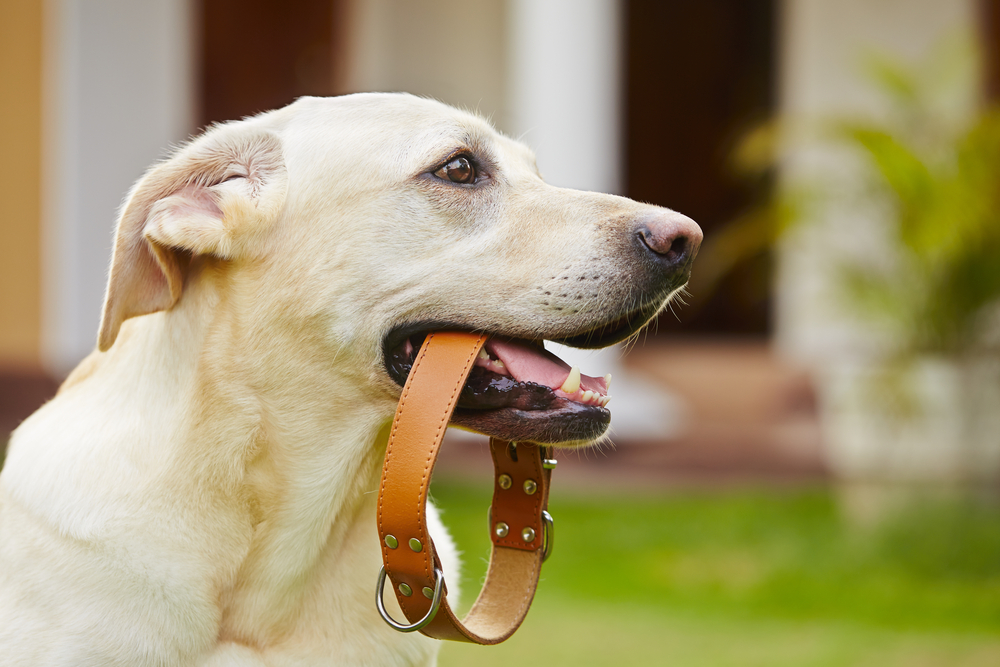All within the first few months of bringing home a dog, you might find yourself bombarded with questions like, what are the best types of dog collars? Which brand of puppy pad is the most absorbent? Should you feed them kibble or raw food? What tricks should you focus on teaching your furry friend? And don’t get us started on keeping up with the latest doggy fashion trends!
Clearly, there are a lot of decisions to make (and rabbit holes to go down!) but it’s helpful to focus on one at a time. So, why don’t we start with something basic: finding the right dog collar for your pup. By the end of this article, your furbaby will have a comfortable, useful, and stylish piece of doggy wear to show off on their next outing with their dedicated Dog Walker!
Why is finding a dog collar so important (and so complicated?)
If you haven’t gone dog collar shopping in a while, or ever, you might be surprised by just how many styles there are. Dog Owners these days have their choice of flat, martingale, show collars, head leaders, and—yes—there are even smart collars. The range of options is both wonderful and head-spinning, and you might wonder why you shouldn’t just pick the cutest or most affordable.
Before you get swept away by the latest doggy trend, there are a couple of reasons why you should put some thought into your dog’s collar.
On the one hand, if you’re going to be attaching your dog’s leash directly to their collar instead of their harness, you’ll want to choose a collar that is comfortable, well-fitting, and not liable to break with normal wear and tear.
And, if you’re worried about your dog getting loose because of past experiences, collars with smart technology like GPS can be life-saving.
Finally, it’s important to consider how training will affect your collar selection. As we’ll discuss in the next section, the field of doggy science has made some major breakthroughs in the past few years when it comes to leash training methods. So, it’s a good idea to be up-to-date on the research before you buy a dog collar.
What are the best types of dog collars for training according to the experts?
Most of the alternatives to traditional flat collars fall under the umbrella of “training collars” or “behaviour-modifying collars.” From prong/chain collars to citronella collars to e-collars, these models have been used for many years to correct behaviours like leash pulling, barking, chasing wildlife, or not coming when called. But, are these the best types of dog collars for your pet?
The vast majority of canine behaviour experts, including the Australian Veterinary Association, the International Association of Animal Behaviour Consultants, the British Small Animal Veterinary Association and others, say no! According to their research-informed recommendations, collars that induce stress, fear or discomfort in dogs have the potential to damage the training relationship, trigger aggressive responses, and cause long-term emotional and physical damage.
So then, what are the best types of dog collars for training? The experts say whichever collar is the most comfortable is the one you should use for training! According to their findings, a standard flat collar or comfortable harness paired with positive reinforcement training is the best way to train any dog. Whether you’re looking to train recall, stop your dog from barking, or work through leash walking challenges, there are effective, humane ways to train your dog, no matter what kind of collar they have on.
What features should you look for in a collar?
As we’ve cleared up, the best types of dog collars are often the traditional flat collar design or something very similar. Here are a few design features that will ensure maximum comfort and durability:
- The proper fit. When putting a collar on your dog, the general rule of thumb is that it should be snug enough not to slide over your dog’s head but loose enough for you to fit two fingers between your dog’s neck and the collar. When dealing with a growing puppy, remember to check their collar fit often and adjust as necessary!
- Lightweight, moisture wicking material. Like the perfect running shoe, the best types of dog collars are the ones that won’t weigh your dog down. Look for breathable, light fabrics for a comfortable collar
- Reflective strips. When it comes to collars, harness, and leashes, we say, the more visibility the better! Opt for bright colours and reflective strips to keep your dog safe in all settings
- Breed-specific collars. Some dog breeds, such as Greyhounds and Salukis, may require collars designed for their unique build. Martingale collars, which tighten gently with pressure, are commonly used for sighthounds to account for their head being narrower than their neck. These types of collars should be used for safety rather than aversive training
- Last but not least, style! Okay, okay, style is not the main consideration when choosing a collar. But, if you’re between a few options that are similarly lightweight and high quality, don’t shy away from the style that matches your dog’s unique personality!
Final thoughts on the best types of dog collars
The sheer number of dog collars available can be overwhelming to new and experienced Dog Owners alike. But, with the shift towards reward-based training and away from aversive methods, the choice is actually not as complicated as you might think!
Find a collar that is well-made, comfortable, visible, and—yes—cute! Because as it turns out, the best types of dog collars are the ones your dog enjoys wearing during your outdoor adventures, walkies with their dedicated Dog Walker, and positive reinforcement training sessions!

